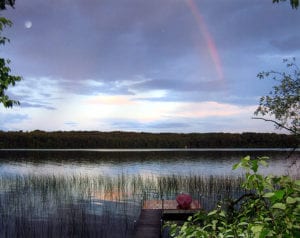We Strive for Clean Water
Over 70% of the earth's surface is covered by water with over 97.5% of that water being salt water, leaving only 2.5% of the earth's water as fresh water. Nearly 70% of the fresh water is frozen in Antarctica and Greenland with the bulk of the rest being in soil moisture and underground aquifers too deep to access. Less than 1% of the earth's fresh water is available for human use. Only about 0.3% of our fresh water is found in the surface of lakes, rivers, and swamps.
Clean water is one of the most valuable resources on earth.
Only about 0.3% of our fresh water is found in the surface of lakes, rivers, and swamps. These resources are highly valuable, providing water for drinking, irrigation, industry, power generation, fishing and other kinds of recreation.
The human population in the US is estimated to be over 325 million with an expected increase to over 416 million in 2060. As a result of population increases, there has been an increase in water demand. Clean water is essential for sustaining not only human life but aquatic and wildlife. Friends of Reservoirs works with citizen groups at the local level to fund projects aimed at improving water quality. All waters are interconnected. We need to "Think Globally and Act Locally.
Some of the main problems facing water in reservoirs is water quality, water clarity, eutrophication, and drought. All waters are interconnected whether it is through rivers and streams or groundwater aquifers. The Environmental Protection Agency (EPA) competed a National Streams and Rivers Assessment in 2009. "Almost half of the nation’s rivers and streams were in poor condition." The EPA also completed a National Lakes Assessment in 2012. "Roughly 1 in 3 lakes (35%) have excess nitrogen while every 2 in 5 lakes (40%) have excess phosphorus. More than half of the lakes were eutrophic or hypereutrophic." Let's delve a little deeper into each of the four main issues affecting water in reservoirs.
Water Quality
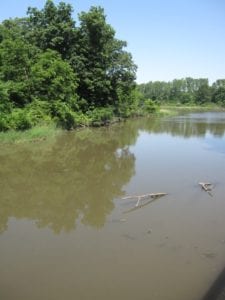 Water quality refers to the chemical, physical, and biological characteristics of water in relation its purpose such as drinking or fishing. A few of the key water quality components of reservoirs include temperature, dissolved oxygen, nutrient concentrations, and pH. Changes in these characteristics can negatively effect the reservoir and the fisheries. For example, temperature varies in reservoirs regionally and seasonally. Rapid temperature changes stress fish and can result in fish kills. Low dissolved oxygen levels stress fish and can cause partial or full lake wide fish kills. Too many nutrients in a reservoir result in eutropication while too few nutrients limits the health of the reservoir and fishery. Lastly, fish have survival limits to the pH range where waters on the extreme ends of acidic and basic result in fish kills.
Water quality refers to the chemical, physical, and biological characteristics of water in relation its purpose such as drinking or fishing. A few of the key water quality components of reservoirs include temperature, dissolved oxygen, nutrient concentrations, and pH. Changes in these characteristics can negatively effect the reservoir and the fisheries. For example, temperature varies in reservoirs regionally and seasonally. Rapid temperature changes stress fish and can result in fish kills. Low dissolved oxygen levels stress fish and can cause partial or full lake wide fish kills. Too many nutrients in a reservoir result in eutropication while too few nutrients limits the health of the reservoir and fishery. Lastly, fish have survival limits to the pH range where waters on the extreme ends of acidic and basic result in fish kills.
Water Clarity
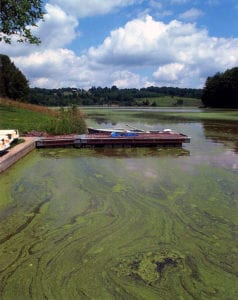 Water clarity is a major issue in reservoir fish habitat. Water clarity is the transparency or clearness of the water. Water clarity is determined by turbidity or the cloudyness of the water due to things like suspended solids, organic and inorganic matter, and phytoplankton (microscopic plants). When water becomes more turbid the visibility decreases due to light hitting the particles and scattering. Water clarity is also determined by the color of the water. Pure water is colorless and allow full light penetration while colored water absorbs light and decrease the depth light can penetrate.
Water clarity is a major issue in reservoir fish habitat. Water clarity is the transparency or clearness of the water. Water clarity is determined by turbidity or the cloudyness of the water due to things like suspended solids, organic and inorganic matter, and phytoplankton (microscopic plants). When water becomes more turbid the visibility decreases due to light hitting the particles and scattering. Water clarity is also determined by the color of the water. Pure water is colorless and allow full light penetration while colored water absorbs light and decrease the depth light can penetrate.
Reservoirs that have low water clarity often have problems with water quality and eutrophication. Pollution can be a big contributor to poor water clarity. Pollution is often a result of water discharges like rain and poor land management practices. These effects are mostly visible at the local level. For example, after a storm there is runoff from nearby agricultural fields into a reservoir that results in an influx in nutrients that result in a algae bloom. Although the effects of pollutants is easier to observe on a local level, pollutants can be transported great distances through the water cycle and cause devastating effects on a large scale.
Eutrophication
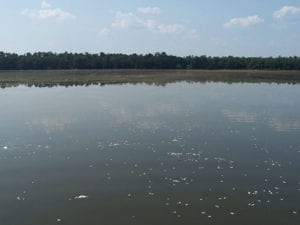 Eutrophication is a process of increasing nutrient enrichment. In a reservoir system this mainly occurs when levels of phosphorus and nitrogen increase and often lead to things like large algae blooms. Reservoir eutrophication increases not only algae but bacteria, fungi and detritus (dead material). When reservoirs become more eutrophic there are often shifts from phytoplankton to cyanobacteria. When these shifts occur, cyanobacteria can cause unpleasant odors and tastes along with releasing toxins. These blooms are not only unsightly, but can have human health implications if allowed to progress. When the cyanobacteria blooms subside, it results in a lot of decaying material in the water that can cause series water quality problems like low oxygen levels. Low oxygen levels can have an extremely negative effect on a fishery resulting in small to large-scale fish kills throughout a reservoir.
Eutrophication is a process of increasing nutrient enrichment. In a reservoir system this mainly occurs when levels of phosphorus and nitrogen increase and often lead to things like large algae blooms. Reservoir eutrophication increases not only algae but bacteria, fungi and detritus (dead material). When reservoirs become more eutrophic there are often shifts from phytoplankton to cyanobacteria. When these shifts occur, cyanobacteria can cause unpleasant odors and tastes along with releasing toxins. These blooms are not only unsightly, but can have human health implications if allowed to progress. When the cyanobacteria blooms subside, it results in a lot of decaying material in the water that can cause series water quality problems like low oxygen levels. Low oxygen levels can have an extremely negative effect on a fishery resulting in small to large-scale fish kills throughout a reservoir.
Drought
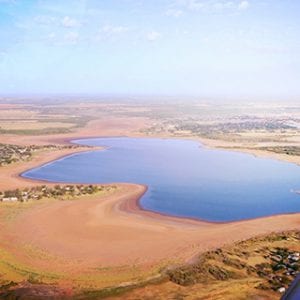
Drought is a huge problem in our reservoirs and present a significant challenge to our fisheries and recreation. Declines in reservoir surface water can have impacts on the economy and human health reducing water available for agriculture, cities water supply, hydropower production, and recreation. Droughts in reservoirs result in less inflow which can cause an increase in salinity through evaporation. Reservoirs going through a drought also experience an increase in eutrophication and often more frequent algae blooms. With low water levels, access often becomes restricted with ramps and fishing piers completely out of water and navigation routes restricted. Vegetation also declines as water becomes less available as seen in the picture to the left.
What are the Solutions?
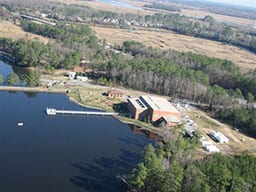 Get involved and support programs at the local level that promote good land management practices, that ensure high quality municipal discharges, and limit industrial waste to prevent future fish kills.
Get involved and support programs at the local level that promote good land management practices, that ensure high quality municipal discharges, and limit industrial waste to prevent future fish kills.
Society cannot function without using water. The key is to return the water to the environment as clean as possible. Use of “state of the art” water treatment facilities is one means of ensuring improved water quality.
Wetlands are nature’s biological filters. Unfortunately, wetlands are being lost at an alarming rate. Work locally to protect existing wetlands and support programs to restore degraded wetlands.
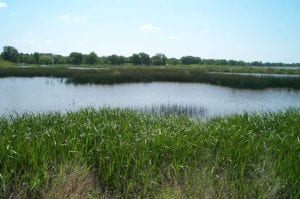 Clean water is essential for society’s physical and emotional health. Action is needed to ensure that our grandchildren have the opportunity to enjoy the benefits of clean water.
Clean water is essential for society’s physical and emotional health. Action is needed to ensure that our grandchildren have the opportunity to enjoy the benefits of clean water.
If you want to learn more about the problems facing reservoirs and approaches to counter these issues check out the Reservoir Fish Habitat Management Book by Steve Miranda!
Become a Contributing Sponsor
Become a part of projects that need your support.


